Why “Chevrons” in a Princess Cut Diamond Make a Difference
In a diamond, the number of facets it is polished with has a direct relationship to its reflecting capacity. In the case of round cut diamonds, the most important factor when comparing diamonds with similar carat weights is spread and cut quality.
Unlike round brilliant cuts which follow a standard 57 facets cutting style, the distribution of facets in a princess cut diamond is different and can be varied. In short, the whole reflecting mechanism can be changed by adding extra facets to the pavilions.
Princess cuts tend to feature a relatively large table and standardized bezel corners. As a result, cutters are left with the pavilion areas where they can make modifications to.
By introducing extra chevrons, the number of facets on the pavilion increases exponentially and this gives the incoming light more surfaces to be reflected upon.
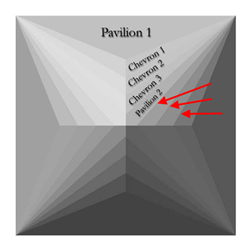
The diagram above shows an example with three chevrons.
When we look at a diamond from the top view, the diamond with fewer chevrons tend to have larger looking facets and displays slower light scintillation. By adding more chevrons, individual surfaces become smaller and the scintillation of light becomes more rapid.
Real Life Photographic Examples of 1.00 Carat Size Princess Cuts
Photographs courtesy of James Allen. Note: You can extract the facet patterning plot from GIA/AGS reports.
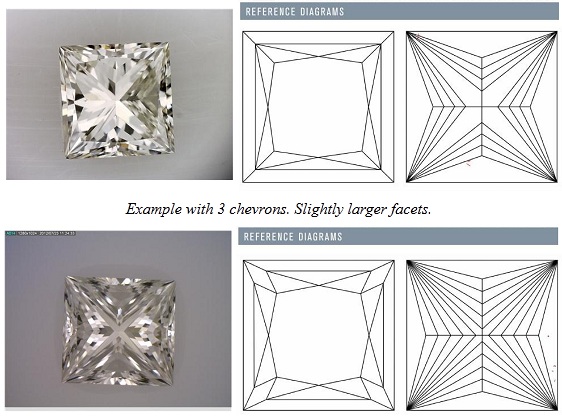
Example with 4 chevrons – tinier facets.
Videos Depicting Princess Cuts With 2, 3 and 4 Chevrons
2 Chevrons – 1.00 Carat H VS2 True Hearts Ideal
Diamonds with 2 chevrons tend to exhibit a more contrasty patterning.
3 Chevrons – 1.00 Carat I VS1 True Hearts Ideal
4 Chevrons – 1.00 Carat H SI1
So, How Many Chevrons Are Optimal For a Great Looking Diamond?
It is almost impossible for us to objectively determine what is beautiful and what is not. Some people might prefer the chunkier, less faceted look while others might want to go with a sea of tiny, sparkling facets.
Now, even though there is a distinct subjective aspect to this question, we can still draw a relationship between the weight of the stone and the optimal number of chevrons.
The relationship is quite simple. For a stone under weighing less than a carat, two or three chevrons are usually enough, four might still be acceptable. As the size of the stone increases, the number of chevrons should also increase in order to emphasize the brilliance of the diamond.
On the other hand, if you have a small stone and a huge amount of facets (0.50 carats with 5 chevrons), the resultant look will be a splintery and chaotic scintillation pattern. With that, it leads us to the most important point.
Chevrons tell us nothing about how bright or sparkly a diamond is since it only provides information about the personality of the cutting style. You need to rely on tangible data and visual methods of assessment if you want to handpick the most beautiful diamond possible.
A stunning 0.796ct J SI1 princess diamond engagement ring from White Flash.

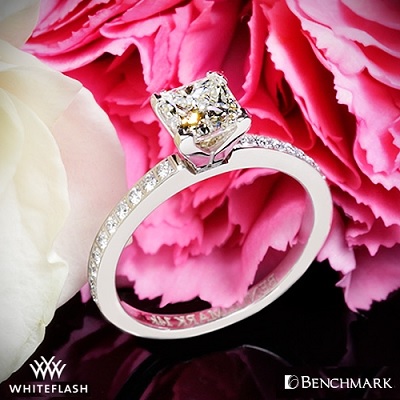
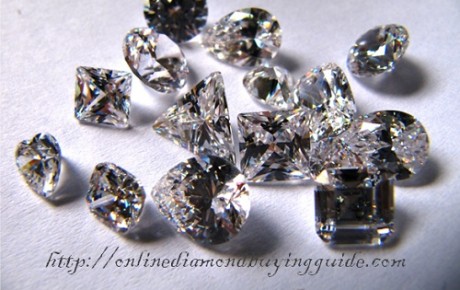
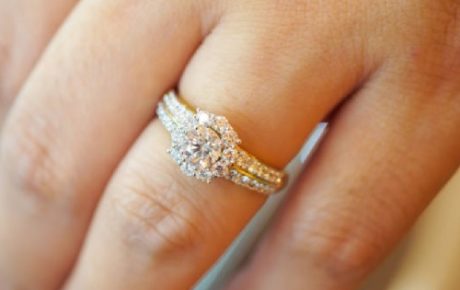
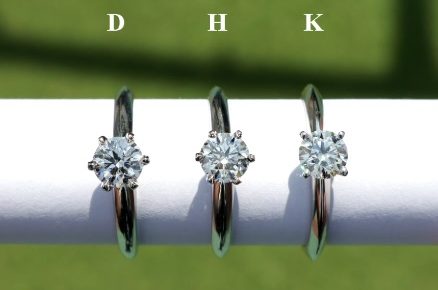
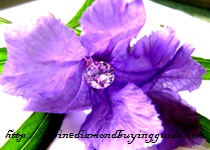









Leave A Comment